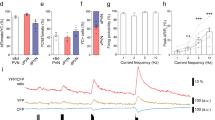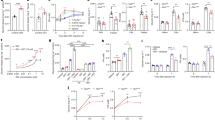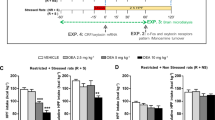Abstract
CURRENT research reveals the existence of endogenous peptides in brain1,2 and pituitary tissue3,4, which are presumably derived from lipotropin (LPH) and which have opiate like effects and affinity for opiate receptors (enkephalin1, endorphins5, C-Fragment6). N-terminal peptides of ACTH also have measurable, although much lower, affinity for rat brain receptors in vitro7,8, ACTH and congeners are known to play a crucial role in the acquisition and maintenance of a variety of behaviours in animals and man9,10. Intraventricular but not systematic administration of these peptides elicits a stretching and yawning syndrome11,12. In rats this syndrome is preceded by a display of excessive grooming13,14 and this grooming response can be suppressed by peripheral administration of specific opiate antagonists (naloxone, naltrexone)15. Morphine also induces grooming15 and this observation prompted us to study the effect of LPH fragments on excessive grooming in the rat in the absence and presence of an opiate antagonist.
This is a preview of subscription content, access via your institution
Access options
Subscribe to this journal
Receive 51 print issues and online access
$199.00 per year
only $3.90 per issue
Buy this article
- Purchase on Springer Link
- Instant access to full article PDF
Prices may be subject to local taxes which are calculated during checkout
Similar content being viewed by others
References
Hughes, J., Smith, T. W., Kosterlitz, H. W., Forthergill, L. A., Morgan, B. A., and Morris, H. R., Nature, 258, 557–579 (1975).
Guillemin, R., Ling, N., and Burgus, R., C.r. Acad. Sci. (Paris) D.282, 783–785 (1976).
Bradbury, A. F., Smyth, D. G., and Snell, C. R., in Peptides: Chemistry, Structure and Biology (edit. by Walter, R., and Meienhofer, J.), 609, (Ann Arbor Sci. Inc., Ann Arbor, 1975).
Gráf, L., Rónal, A. Z., Bajusz, S., Cseh, G., and Székely, J. I., FEBS Lett., 64, 181–184 (1976).
Lazarus, L. H., Ling, N., and Guillemin, R., Proc. natn. Acad. Sci. U.S.A., 73, 2156–2159 (1976).
Bradbury, A. F., Smyth, D. G., Snell, C. R., Birdsall, N. J. M., and Hulme, E. C., Nature, 260, 793–795 (1976).
Terenius, L., J. Pharm. Pharmac., 27, 450–452 (1975).
Terenius, L., Gispen, W. H., and de Wied, D., Eur. J. Pharmac., 33, 395–399, (1975).
De Wied, D., in The Neurosciences (edit. by Schmitt, F. O., and Worden, F. G.), 653–666 (MIT Press, Cambridge, Massachusetts, 1974).
De Wied, D., Hospital Practice, 123–131 (1976).
Ferrari, W., Gessa, G. L., and Vargiu, L., Ann. N Y Acad. Sci., 104, 330–345 (1963).
Gessa, G. L., Pisano, M., Vargiu, L., Crabai, F., and Ferrari, W., Rev. Canad. Biol., 26, 229–236 (1967).
Izumi, K., Donaldson, J., and Barbeau, A., Life Sci., 12, 203–210 (1973).
Gispen, W. H., Wiegant, V. M., Greven, H. M., and de Wied, D., Life Sci., 17, 645–652 (1975).
Gispen, W. H., and Wiegant, V. M., Neurosci. Lett., 2, 159–164 (1976).
Gispen, W. H., Van der Poel, A., and van Wimersma Greidanus, Tj. B., Physiol. Behav., 10, 345–350 (1973).
Wiegant, V. M., and Gispen, W. H., Behav. Biol. (in the press).
Gispen, W. H., Buitelaar, J., Wiegant, V. M., Terenius, L., van Wimersma Greidanus, Tj. B., and de Wied, D., Abstract Federation Meeting Dutch Med. Biol. Soc., 199 (Dutch Medical and Biological Society, Amsterdam, 1976).
Gispen, W. H., Buitelaar, J., Wiegant, V. M., Terenius, L., and de Wied, D., Eur. J. Pharmac., 39, 393–397 (1976).
Bertolini, A., Vergoni, W., Gessa, G. L., and Ferrari, W., Nature, 221, 667–669 (1969).
Baldwin, D. M., Haun, Ch.K., and Sawyer, Ch.H., Brain Res., 80, 291–301 (1974).
Delius, J. D., Craig, B., and Chaudoir, C., Z. Tierpsychol., 40, 183–193 (1976).
MacLean, P. D., A. M. A. Archiv. Neural. Psychiat., 78, 128–142 (1957).
Beagley, W. K., J. comp. Physiol. Psychol., 90, 790–798 (1976).
Bär, H. P., and Hechter, O., Biochem. biophys. Res. Commun., 35, 681–686 (1969).
Halmi, K. A., Halmi, N. S., and Anderson, D. J., Proc. Soc. exp. Biol. Med., 147, 399–402 (1974).
Author information
Authors and Affiliations
Rights and permissions
About this article
Cite this article
GISPEN, W., WIEGANT, V., BRADBURY, A. et al. Induction of excessive grooming in the rat by fragments of lipotropin. Nature 264, 794–795 (1976). https://doi.org/10.1038/264794a0
Received:
Accepted:
Issue Date:
DOI: https://doi.org/10.1038/264794a0
Comments
By submitting a comment you agree to abide by our Terms and Community Guidelines. If you find something abusive or that does not comply with our terms or guidelines please flag it as inappropriate.



